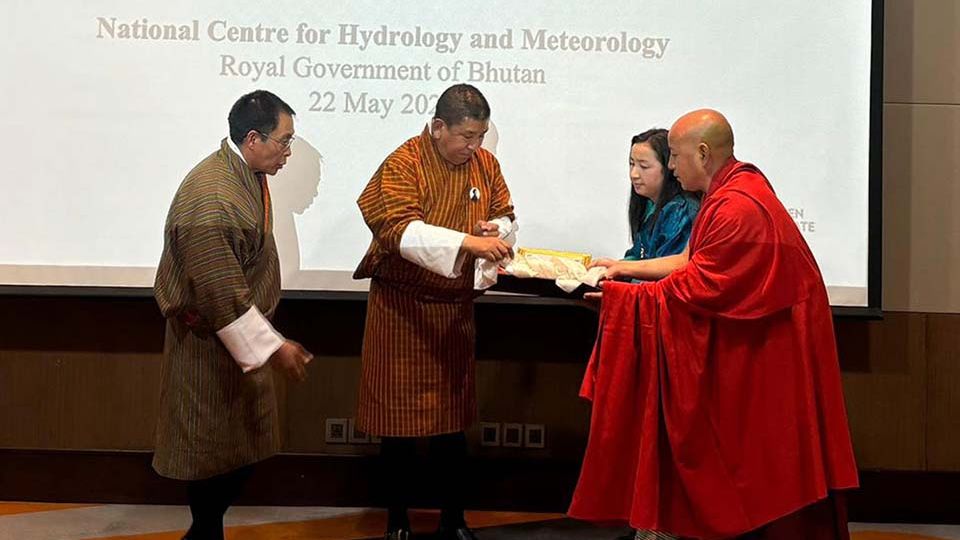May 23, 2024
THIMPHU – The coming monsoon, between June and September, might be a difficult monsoon, according to experts from the National Centre for Hydrology and Meteorology (NCHM), with the centre’s outlook predicting slightly above normal temperatures and rainfall.
This was shared at the 10th National Climate Outlook forum which was held in Thimphu yesterday.
The South Asian Climate Outlook Forum (SASCOF), held on April 29, also mentioned that the Hindu Kush Himalayan region should brace up for the upcoming monsoon, with experts warning of high rainfall. This rainfall is expected to occur in the context of an overall warming trend, with both minimum and maximum temperatures being higher than normal.
The NCHM used data from 1996 to the previous year (2023) to calculate average temperature and rainfall, which is termed “normal.” When the predicted temperature and rainfall for the year are within a 10 percent increase of the normal, it is termed “slightly above normal,” and when they are within a 10 percent decrease of the normal, it is termed “slightly below normal.”
An official with the NCHM, Ugyen Chophel, said that even normal or below-normal rainfall is never normal for Bhutan due to its topography and geography, which makes it prone to natural disasters.
“While slightly above normal rainfall is concerning for some sectors, it can be beneficial for agriculture and hydropower. This forecast is meant to prepare us as forecasts cannot guarantee outcomes, so it is essential to stay alert by monitoring the onset of the monsoon and keeping updated with regular forecasts.”
Last year’s national climate outlook for rainfall predicted slightly below normal levels. The normal average accumulated rainfall between 1996 and 2022 was 691.1 millimeters (mm), while the accumulated rainfall last year was 564.5 mm, confirming that the outlook was correct. However, the recorded average temperature in 2023 was 20.87 degrees Celsius, contradicting the national outlook, which had predicted that the temperature would be slightly above normal at 21.75 degrees Celsius.
“Even when the country recorded slightly below normal rainfall last year, we observed a number of extreme weather events which created havoc,” Ugyen Chophel said.
Some of the extreme weather events last year included continuous heavy rain which caused road blocks between Thimphu and Phuentsholing on June 16, flash flood on August 25 caused damage to properties and infrastructure in Wangdue, Punakha, and Trongsa.
On July 13, 2023 flash floods also caused damage to properties and infrastructure in Phuntsholing and Gelephu.
In the region this year, there has already been a flood in Afghanistan killing more than 300 people and destroying thousands of homes, heatwave broke temperature records last month forcing schools to close, impacting crops, and sparking forest fires, according to ICIMOD.
Ugyen Chophel said that climate drivers such as the Indian Ocean Dipole outlook look positive, which means it would bring rain during the early monsoon. “Additionally, La Niña conditions are likely to develop in the second half of the southwest monsoon season in the Pacific Ocean, which would again bring rain to the country in the late monsoon.”
The astrological climate outlook from the Pangrizampa College of Astrology (PCA) predicts storms and heavier rainfall in the northern parts of the country, good agricultural yields, no major natural disasters, and an increase in forest fires at the start and end of the year.
The 10th National Climate Outlook was prepared by NCHM using data from national and international climate organisations such as PCA, the World Meteorological Organization, SASCOF, ERA5, and the Japan Meteorological Agency, among others. The team studied and compared all the outlooks to prepare the consensus seasonal outlook.


